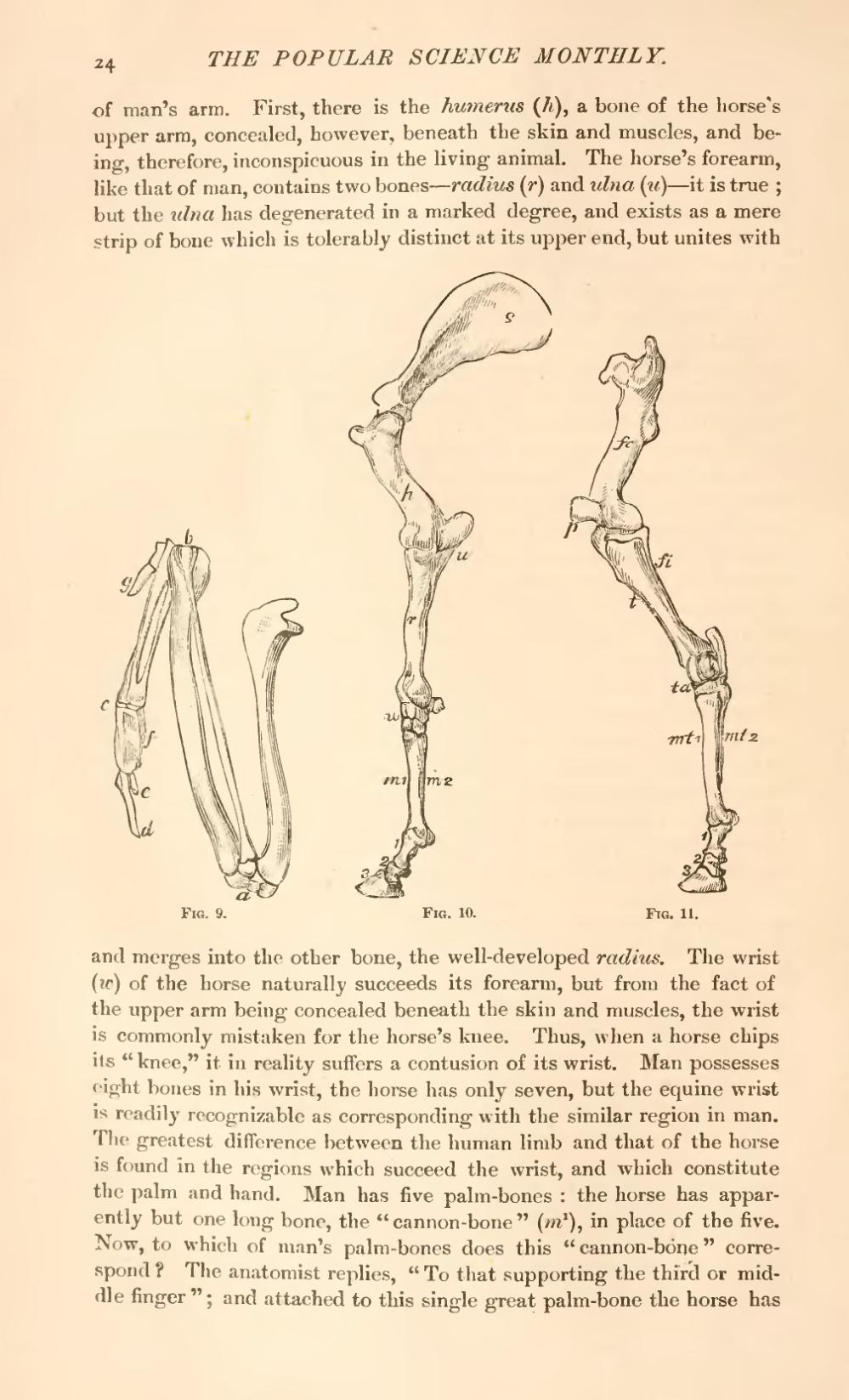of man's arm. First, there is the humerus (h), a bone of the horse's upper arm, concealed, however, beneath the skin and muscles, and being, therefore, inconspicuous in the living animal. The horse's forearm, like that of man, contains two bones—radius (r) and ulna (u)—it is true; but the ulna has degenerated in a marked degree, and exists as a mere strip of bone which is tolerably distinct at its upper end, but unites with

| Fig. 9. | Fig. 10. | Fig. 11. |
and merges into the other bone, the well-developed radius. The wrist (w) of the horse naturally succeeds its forearm, but from the fact of the upper arm being concealed beneath the skin and muscles, the wrist is commonly mistaken for the horse's knee. Thus, when a horse chips its "knee," it in reality suffers a contusion of its wrist. Man possesses eight bones in his wrist, the horse has only seven, but the equine wrist is readily recognizable as corresponding with the similar region in man. The greatest difference between the human limb and that of the horse is found in the regions which succeed the wrist, and which constitute the palm and hand. Man has five palm-bones: the horse has apparently but one long bone, the "cannon-bone" (m1), in place of the five. Now, to which of man's palm-bones does this "cannon-bone" correspond? The anatomist replies, "To that supporting the third or middle finger"; and attached to this single great palm-bone the horse has
